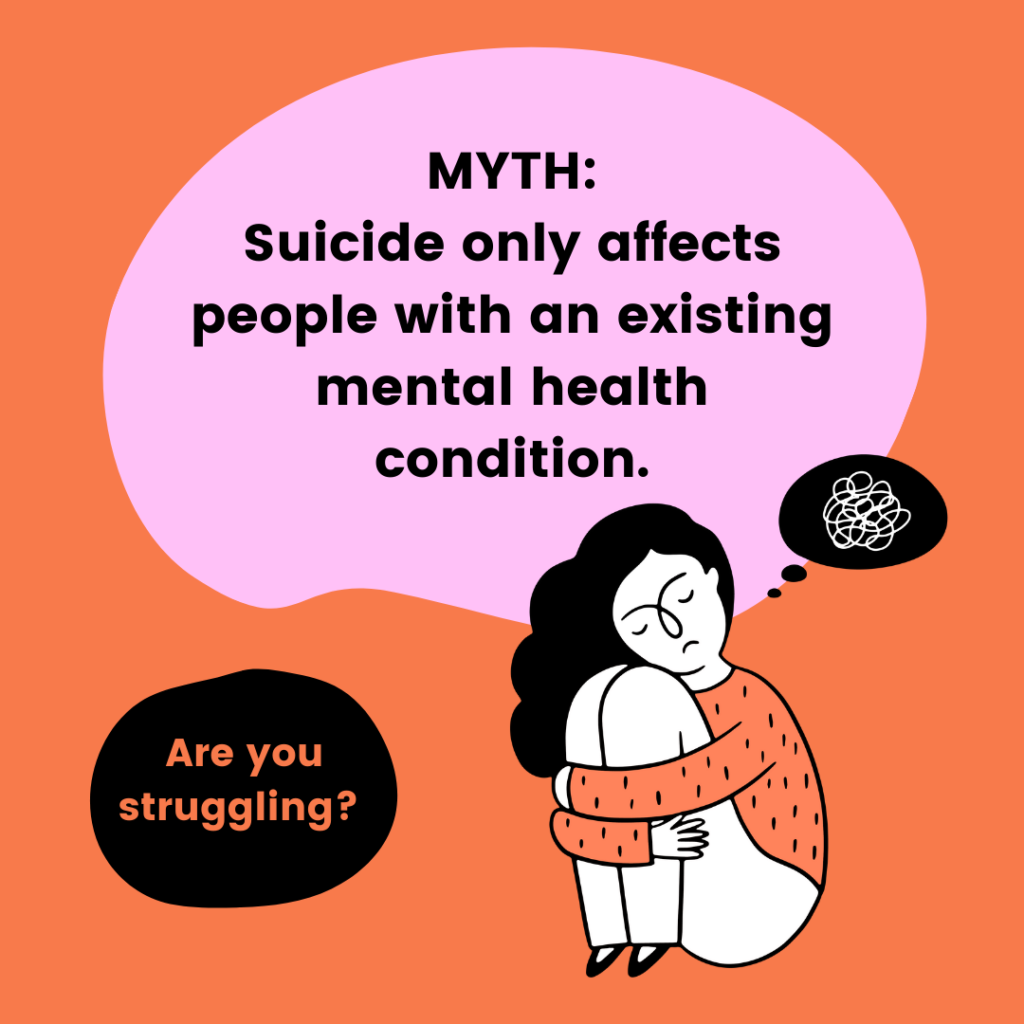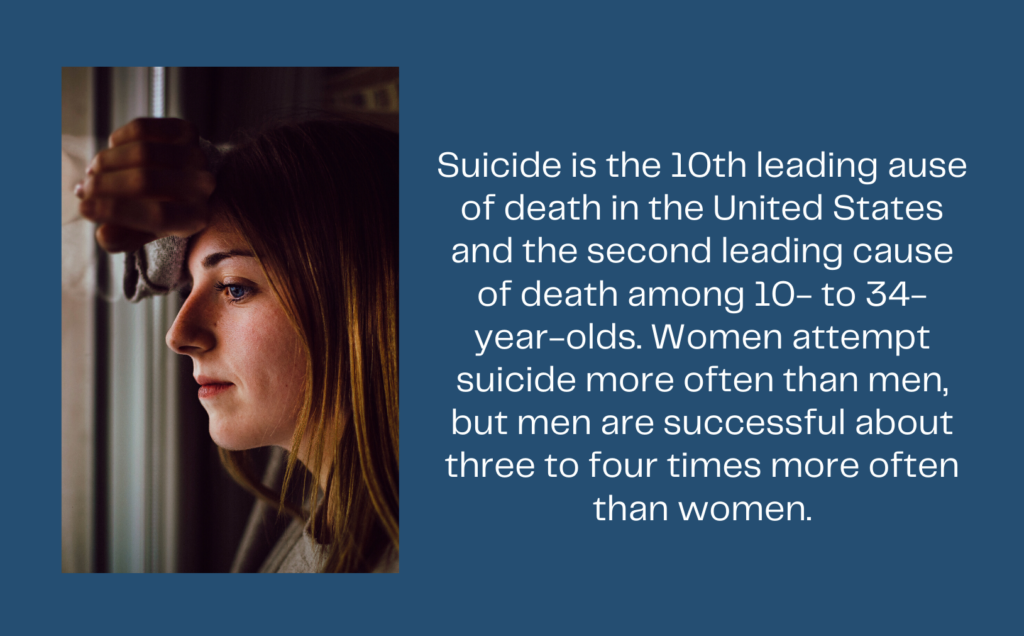“Mental pain is less dramatic than physical pain but it’s more common and harder to bear.”~ C.S. Lewis
Many people struggle with suicidal thoughts during times of stress or when facing mental or physical health adversity. The onset of the pandemic and the continuing emergence of variants stemming from the Covid-19 virus hasn’t helped either. Things have changed. Today’s world is more unpredictable than ever. Whatever the triggers are influenced by, the result is it can leave people feeling sad, depressed, hopeless or even suicidal.
“As the nation continues to respond to the COVID-19 pandemic and its long-term effects on isolation, stress, economic insecurity, and worsening substance use, mental health, and well-being, prevention is critical,” said The Centers for Disease Control and Prevention (CDC).

According to the CDC, suicide is a leading cause of death in America, with the number of people who think about or attempt suicide still ranking high. In 2020, 45,979 deaths were linked to suicide – about one death every 11 minutes. That same year, they reported, “An estimated 12.2 million American adults seriously thought about suicide, 3.2 million planned a suicide attempt, and 1.2 million attempted suicide.”
Suicidal thoughts (or suicidal ideation) is described as an individual having thoughts, ideas, or ruminations about the possibility of ending one’s own life. Rather than being an actual diagnosis, suicide ideation is a symptom of some form of mental disorder. It can also occur in response to unpleasant life events without a mental disorder being present.
Suicide ideation can be described in a passive or active form. The former occurs when an individual has thoughts about wishing they were dead but doesn’t have any plans to actually commit suicide, while active suicidal ideation is a) thinking about it, and b) having the intent to go through with the suicide, including having a plan, the means or an intent on how to go through with it.
Watch to Watch Out For: An individual experiencing suicide ideation may show the following signs or symptoms
- feeling or appearing to feel trapped or hopeless
- feeling intolerable emotional pain
- being preoccupied with violence, dying, or death
- increasing mood swings: feeling happy, sad angry, rage, irritable
- talking about revenge, guilt, or shame
- experiencing agitation or overly anxiety
- changes in personality, routine, or sleep patterns
- increasing the usage of drugs or alcohol
- engaging in risky behavior, such as driving carelessly, taking drugs, being sexually more promiscuous
- getting their affairs in order and giving away possessions
- getting hold of a gun or substances that could end a life
- experiencing depression, panic attacks, or impaired concentration
- isolating themselves
- experiencing a loss of enjoyment in eating, exercise, social interaction, or sex
- expressing severe remorse and self-criticism
How Can You Help Someone Struggling with Suicide Ideation?
Ask questions: “Are you thinking about suicide?” Show you’re open to speaking about suicide in a non-judgmental and supportive way. Asking in a direct and unbiased way can open the door for communication about their emotional pain. Other questions such as “How do you hurt?” and “How can I help?” can also facilitate communication. Research shows talking to someone about their suicidal thoughts doesn’t usually prompt them more to end their life.
Listen without judging: Show that you are taking what they’re saying seriously, especially if they let you know they are having suicidal thoughts. It’s important to listen to their reasons for being in emotional pain, as well as listening for any potential reasons they want to continue to stay alive. Help them focus on their reasons for living. Avoid trying to impose your reasons for them to stay alive.
Be there for them: Be present for someone. If you are unable to be physically present with someone, talk to them via phone. Help them to develop some ideas for others who might be able to help, like a relative, therapist, psychiatrist, help-group, or mental health coach or companion. It’s also important to follow through with what you said you would do. If you can’t commit to something, be upfront with them.
Connections: Being present for someone can help save their lives. Connectedness can act as a buffer against despair and mental anguish. In Thomas Joiner’s article, “Interpersonal-Psychological Theory of Suicide,” published by the American Psychological Association, he explains connectedness as one of its main components – specifically, the lack of. “When someone experiences a low sense of belonging, paired with perceived burdensomeness (tied to “connectedness” through isolating behaviors and lack of a sense of purpose) and acquired capability (a lowered fear of death and habituated experiences of violence), their risk can become severely elevated.”
Keep them safe: Find out if they have tried to do anything to try to kill themselves before talking with you. Does thoughts of suicide include knowing how they would kill themselves? Do they have a specific, detailed plan? What’s the timing for their plan? What sort of access do they have to carry out their plan? From there, you can help determine if they have passive or active suicidal ideation.
*If the individual is an immediate threat to themselves or others (self-violent, threatening violence to others), it’s important to call 911 to have them go to the emergency room/hospital.
Help them get a safety plan: If they are not in any immediate danger, cast a safety net to
help support them, which can include researching mental health resources in their community and giving out phone numbers like the National Suicide Prevention Lifeline (800-273-8255) that they can reach out to.

Treatment:
Your doctor may recommend one-on-one therapy, medications to help treat any underlying depression, lifestyle changes that can help reduce the risk of suicide, and possibly family therapy to help improve family dynamics if needed.
It’s important to note that feelings are temporary. Feelings come and go and are not permanent. Even if life seems dark or hopeless, there is a solution. There is a road to feeling better with treatment.
If you’re struggling with suicidal thoughts, Connections in Recovery can help by putting a clinical team together for you, providing case management or a mental health coach or companion to help guide you towards a healthier and more fulfilling life. Visit us at www.ConnectionsinRecovery.com or call (888) 617-1050 to find out how we can help.
- Learn more about suicidal ideation.
- Contact the National Suicide Prevention Lifeline 1-800-273-TALK (8255) or chat. Text 741741 for 24/7 support.
- View SAMHSA’s suicide prevention resources.


